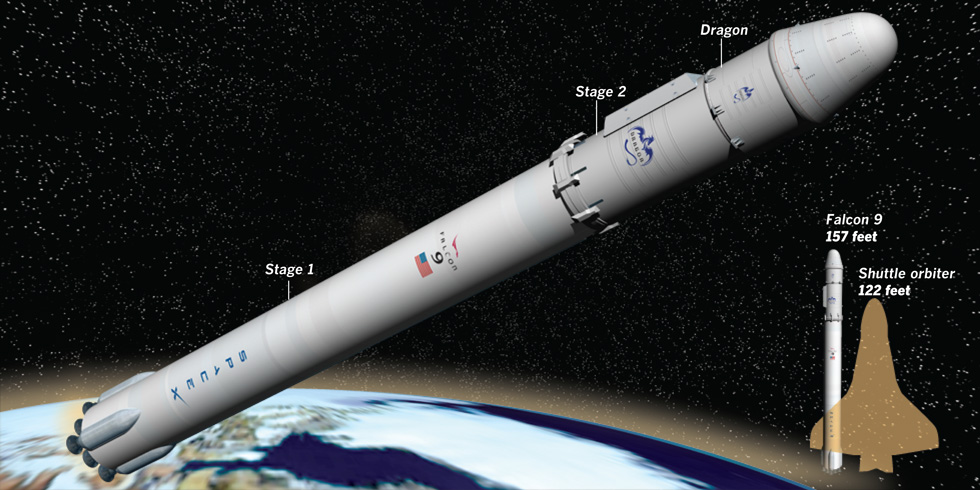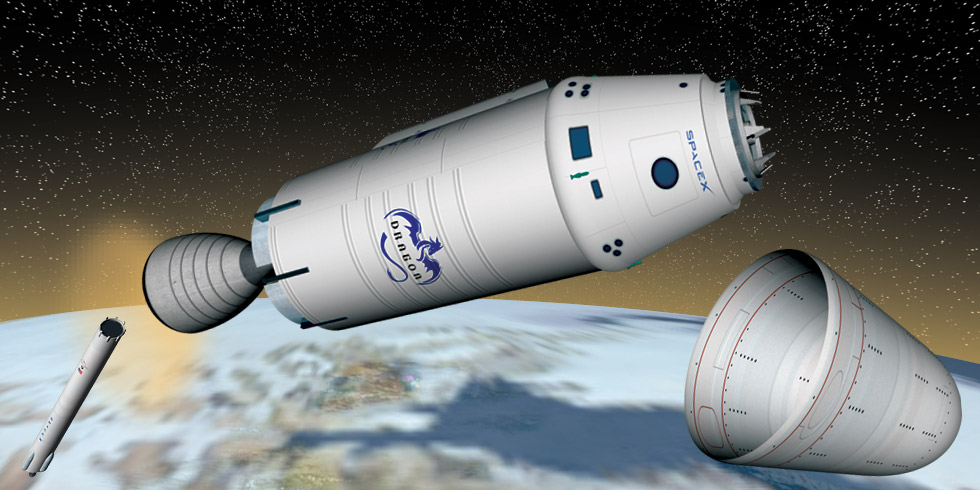Storyboard
SpaceX Dragon spacecraft launches successfully for first mission to space station
SpaceX’s Falcon 9 rocket successfully launched Sunday. Its Dragon spacecraft carried food, experiments and supplies. The mission marks the start of a new era for NASA in which a private company resupplies the International Space Station. Hawthorne-based SpaceX has a contract with NASA for 12 cargo missions.
The two-stage Falcon 9 rocket with its Dragon capsule launched from Cape Canaveral, Fla. Sunday.











